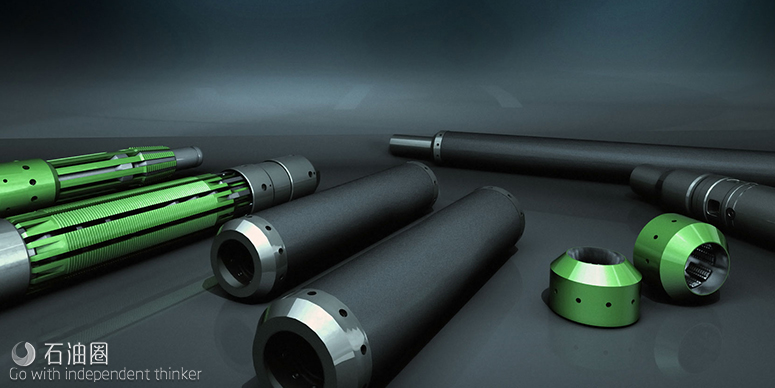The Reflex® Open Hole Isolation System isolates unwanted water production throughout the wellbore. Utilising Reactive’s proprietary swellable packers, the system is suitable for use in high salinity fluids or liquid hydrocarbon. The bi-directional slips allow the packer assembly to be released as soon as at depth, eliminating the requirement to wait until the packer has fully sealed.
- Swells in high salinity fluids
- Large surface area of bi-directional slips minimise impact on formation
- Customisable pressure rating and fluid compatibility
- Can be deployed in bridge plug or straddle packer configurations
In an open hole environment where formation strength can vary, maximum surface contact between the slips and formation is critical. The Open Hole Anchor contains durable bi-directional slips providing a large contact area with the wellbore, anchoring the Reflex® HP Swellable Isolation packer in place.
With a 100% success rate in over 24,000 installations worldwide, including particularly challenging high pressure applications, Reflex® Swellable Isolation packers have a field-proven pedigree. The Reflex® HP has been rigorously tested in a multitude of hydrocarbon and water based fluids as well as a broad range of temperatures to confirm swell speed, maximum differential pressure capability and final swell volume.
Reflex® HP
The Reflex® HP Swellable Isolation Packer is our high-pressure seal solution, with swelling elastomers that are bonded directly to OCTG tubing, casing or mandrels, per customer application.
Commonly used in open-hole isolation, as well as intermediate and surface casing annular isolation, Reflex® HP Swellable Isolation Packers cover a wide range of well conditions – high temp to ultra low temp environments, large wash-out coverage, fast swell, ultra-slow swell, high chlorides, exotic brines, high water cut, including deep water sea-bed thermal applications.
Reactive Downhole Tools’ technical staff can design and test Reflex® HP Swellable Isolation Packers for a bespoke solution to the most perplexing environments.
- Element lengths of up to 10-m (35-ft) can be manufactured to suit all pipe sizes.
- Manufacturing occurs in-house enabling very short lead times.
- Provided in oil, water and combination compounds.
Reflex® Lite
As the little cousin of the Reflex® HP, the Reflex® Lite Swellable Isolation Packer is a slip-on element, which can be easily installed onto OCTG tubing or casing at the work-site and secured in place with end-rings. Reflex® Lite is available in a range of element lengths up to 1-m (3.2-ft) and to suit all pipe sizes.
Because Reflex® Lite’s element is not bonded to the base pipe, the tubing can rotate within the element which drastically reduces the risk of element damage under rotation. End-rings are available with up to 200-klbs anchoring force*.
The modular design of Reflex® Lite means that it can be deployed in multiple configurations:
- Single element for low pressure applications, e.g. ICD/screen completions.
- Individual spaced elements for low-pressure applications with potential washouts.
- Stacked elements for higher pressure applications, e.g. stimulation.
- Alternate oil (Reflex® Lite) and water (Reflex Lite H2O) swell elements for high water-cut wells.
Reflex® Lite – an easy to ship and store, cost-effective modular solution, giving flexibility to your planning and contingency options.
ADVANTAGES:
- No mechanical delay required
- Modular design gives flexibility
- Compatible with exotic and high salinity brines
- Acid, H2S and CO2 tested
- Chemical resistance to all common oilfield chemicals
- Engineered swell times for safe deployment
- Short lead times
Isolation failure from poor cementation is a common problem faced by the industry. It can happen at various points during the life cycle of a well – from an initial poor primary cement placement through to gradual failure due to temperature and/or pressure fluctuations. Workover and intervention of poor cement is a costly and timely activity, but such problems can be avoided by using swellable packers in conjunction with the cemented sections.
A Middle East operator was drilling and completing a pilot well to better understand the sealing layer of formation between two potentially productive reservoirs. The confirmation of the integrity of this barrier was critical to the creation of an accurate field development plan.
The primary completion design called for a cemented liner straddling all three layers. Within this, a dual completion string with pressure and temperature gauges above and below a production packer would allow post perforation monitoring of flow, if any, between the layers.
However, the integrity of the cemented barrier was critical to the success and validation of the data gathered. To aid this, a swellable packer was required to run as part of the outer cemented liner to provide a secondary, failsafe barrier which would activate in the event of a cement failure.
The packer therefore could not impede the primary cement application, and had to be of sufficient length to overlap all three layers and allow for any unforeseen off depth placement.
Reaction
Reactive worked to design a packer which was compatible with the unique requirements of the application and the operator. To ensure there would be no impact on the primary cement placement, the diameter of packer was controlled by analysing the fluid train that would be seen during operations.
Reviewing the individual rheology at each stage allowed Reactive to confirm that the packer would offer a slow swell during deployment and cementation – which ensured that cement circulation was maintained – but would still swell rapidly should hydrocarbon breakthrough occur.
This combination safeguards the primary cement placement, whilst still allowing difficulties to be contained efficiently should they occur.
As Reactive’s manufacturing facility has the ability to handle large casing joints of up to 46ft in length and 30” in diameter, it allowed for the manufacture of a packer which was far larger than an average size to simultaneously straddle all three formation layers.
This type of installation was the first of its kind for the operator, and Reactive. By working locally with the technical team, Reactive was able to offer sound expertise and support to aid in the correct solution, and reaffirming its abilities at the forefront of swellable technologies.

 石油圈
石油圈
